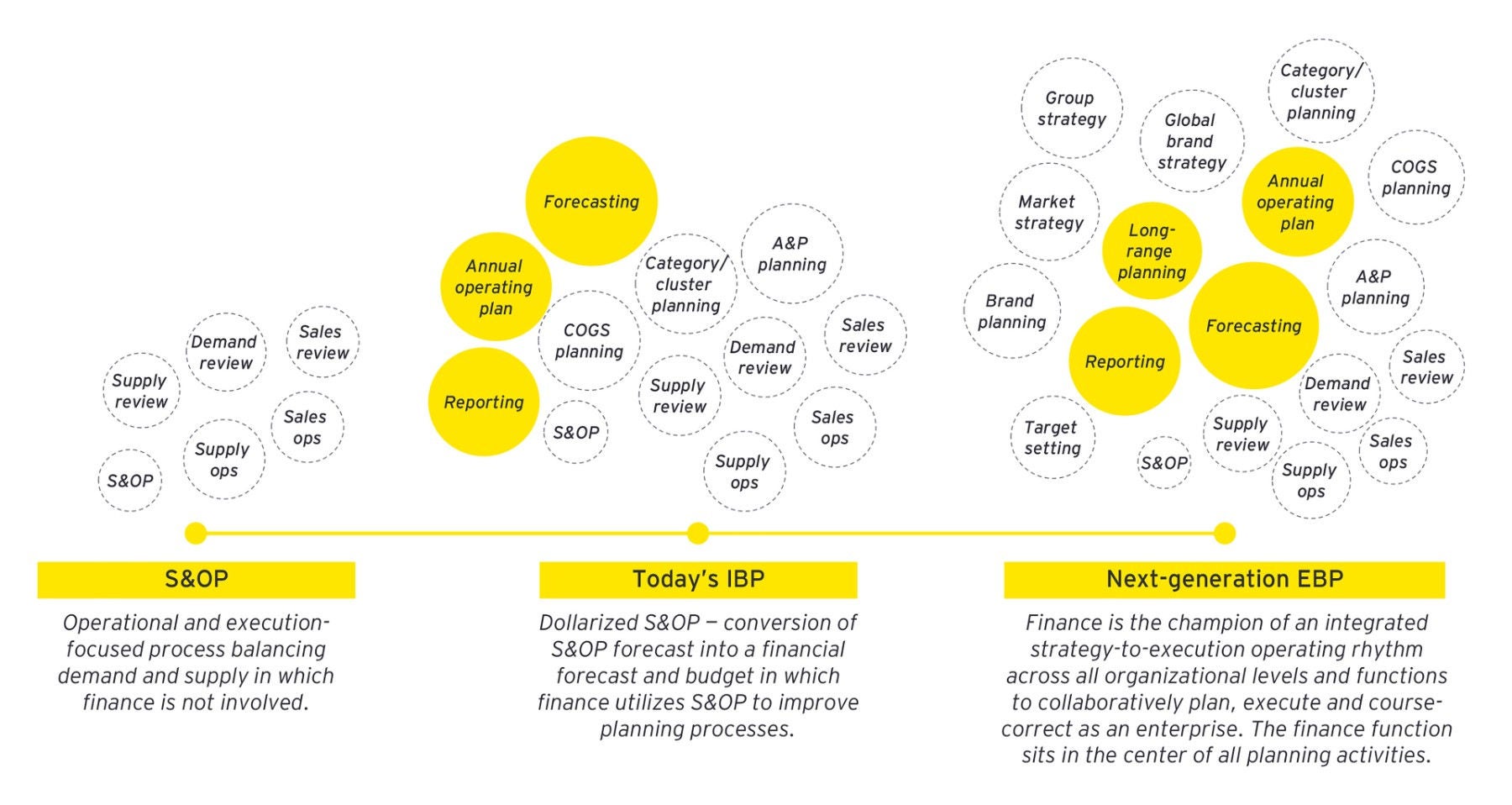EY refers to the global organization, and may refer to one or more, of the member firms of Ernst & Young Global Limited, each of which is a separate legal entity. Ernst & Young Global Limited, a UK company limited by guarantee, does not provide services to clients.

Discover how organizations can move to a more connected, insights-driven process called enterprise business planning (EBP).
Impacts of the digital finance journey on FP&A
The financial planning and analysis (FP&A) function has a mandate to evolve its role as a strategic value partner. Leaders are leveraging the explosive trends in digital innovations and capabilities and are transforming areas, such as planning, reporting and transactional execution. Organizations all over the globe are seeking to harness solutions, such as artificial intelligence (AI), robotic process automation (RPA), cloud computing and other technologies, for a variety of business processes. Yet, transformation is not an overnight feat. To implement a digital solution without examining the underlying related processes is a costly mistake that can result in lost opportunities.
While digitization is ushering in demand for increased end-to-end efficiency and visibility, the traditional finance function is having an identity crisis. With larger demands and higher expectations on the CFO, organizations are forced to deconstruct the finance function and synthesize a future vision fueled by enhanced skills and leading-edge technology.
By leveraging digital tools and leading process techniques, FP&A can close the gap between the upstream commercial and supply chain events and the impact on financial outcomes. Metrics rise and fall, and sometimes finance is notified only on a need-to-know basis. Now, FP&A can shift from looking in the rearview mirror to predicting and reporting on what is likely to happen.
By combining leading processes, cross-functional teaming and widely available technology, organizations can move to a more connected, insights-driven process called enterprise business planning (EBP). But what is EBP?
Why enterprise business planning is important for your organization
Moving to EBP can help an organization shift from sporadic interactions to collaboration, and teaming throughout the organization if done effectively. But why is this important? Disruption, an unstable social climate, and global events have shown us that a rudimentary understanding of business drivers in relation to planning is inadequate. Many companies are racing toward greater visibility and efficiency by leveraging new technology and digital capabilities; however, technology is not the sole enabler of more efficient outputs.

Read the full whitepaper to learn more about:
- What planning processes is FP&A involved in?
- What role does FP&A play today, and what role will FP&A play in the future?
- Where does FP&A fit into EBP?
- Enterprise business planning champion roles
- Tools that can help an organization become a champion of EBP
- Next steps to become an EBP champion
Download now
Summary
Shedding the old ways of operating and implementing novel approaches to problems is not easy. However, FP&A can come together with other areas of the business to establish an end-end framework – one that integrates planning activities in an efficient and sustainable way – to help set the path for your EBP adoption journey.



